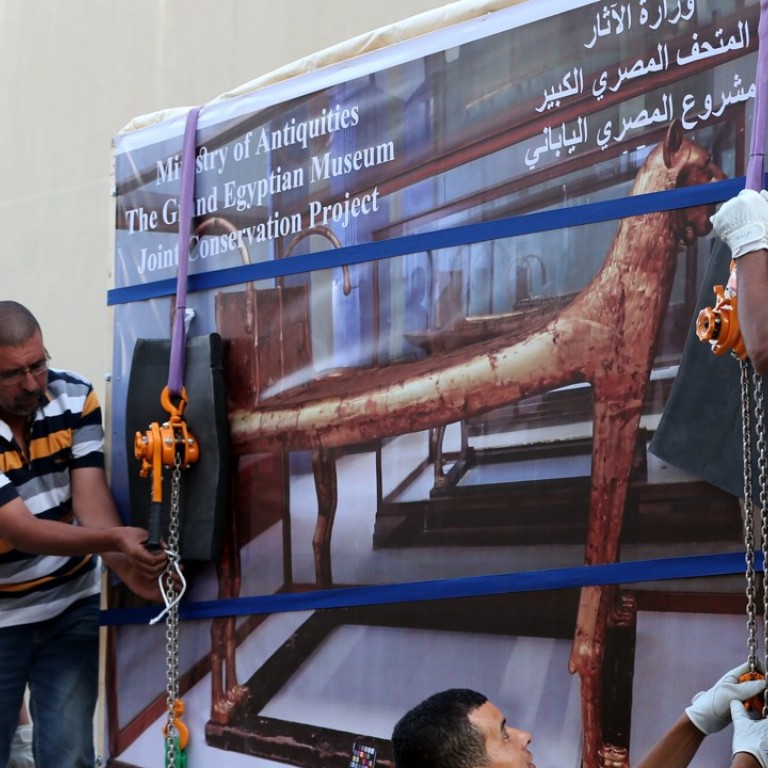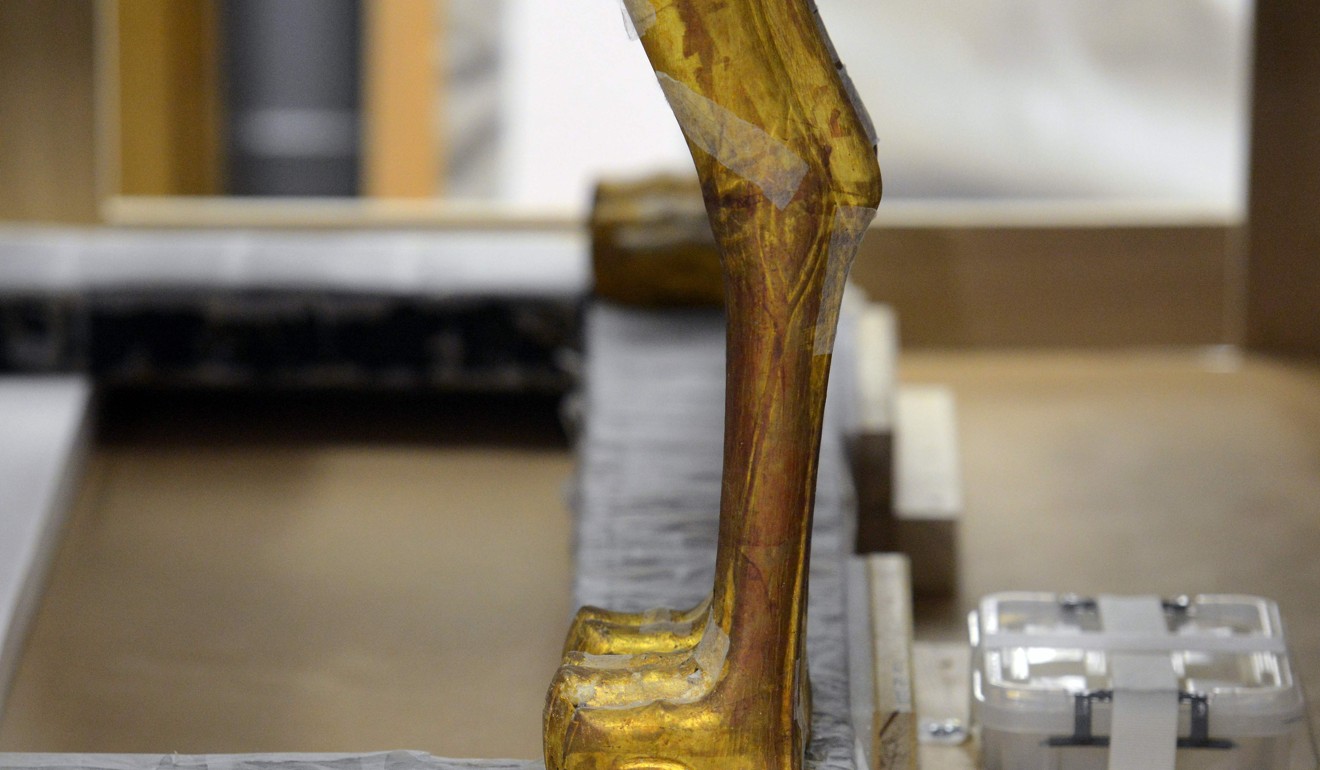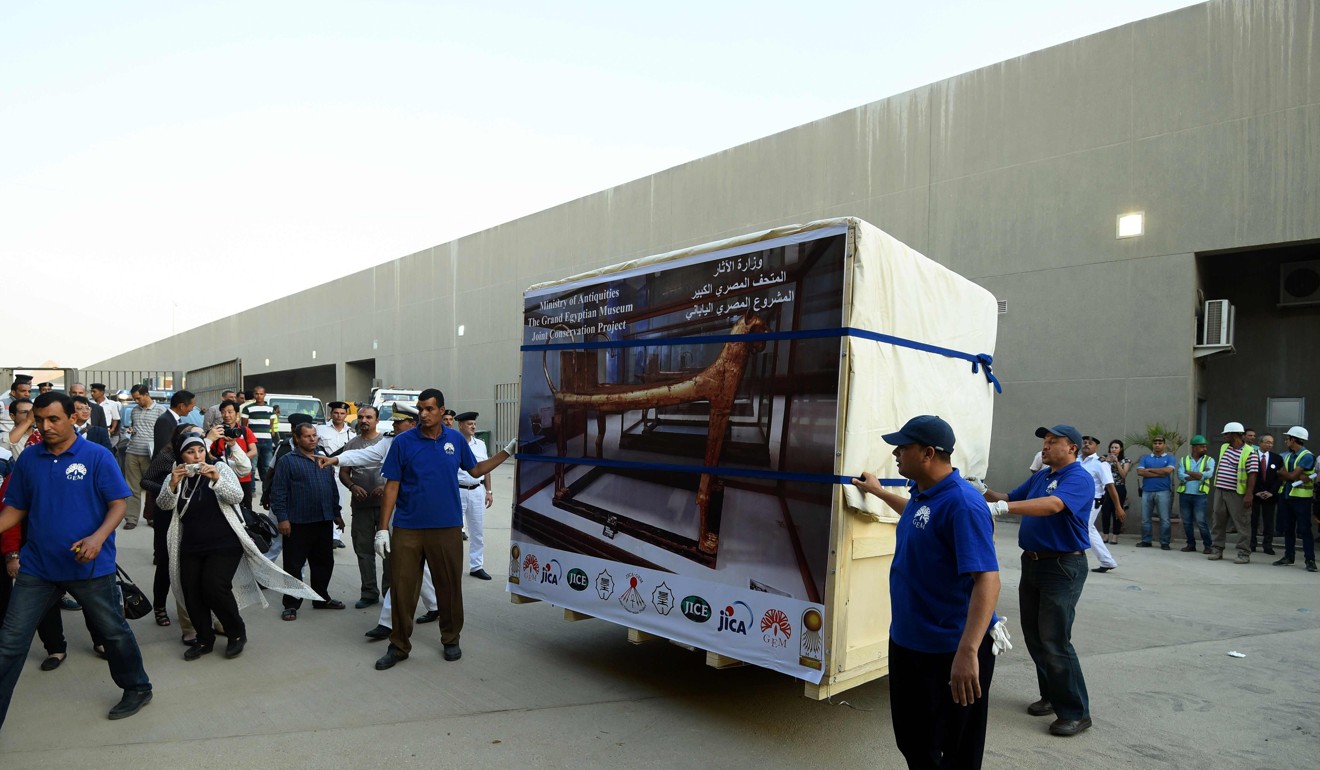
King Tut’s bed moves to new digs near the Giza Pyramids in Egypt
The still unfinished new Grand Egyptian Museum at the foot of the pyramids will eventually house the collections of the current brimming museum in the city’s Tahrir Square.
A gilded bed and a funeral chariot from Tutankhamun’s tomb -- discovered by British archaeologist Howard Carter in 1922 -- were transferred on Tuesday, well packed in wooden containers complete with materials to protect them from both heat and vibration.
Two trucks bearing the ancient treasures pulled up at the new Grand Egyptian Museum, escorted by police vehicles. In one of the galleries of the new complex, technicians wearing white gloves gingerly unwrapped the precious objects.

Relocating the two pieces forms part of a joint programme with the Japan International Cooperation Agency (JICA) to restore, pack and transport 71 items from the existing museum to the new facility, an antiquities ministry statement said.
“During the next weeks and months we’re going to transfer regularly more than 1,000 remaining objects in Cairo museum to be restored and prepared for the exhibition here in the first half of 2018,” said Antiquities Minister Khaled al-Enany.
“Today is a big event... today we start transferring big objects,” he said.
The Grand Egyptian Museum had been scheduled to open in 2015, but construction has lagged as expenses mounted to more than US$1 billion.
The museum is now scheduled to open partially in 2018.
Eventually, the vast complex will house more than 100,000 relics including the 4,500 pieces of Tutankhamun’s treasure discovered in the southern Valley of the Kings in Luxor.

But the young pharaoh’s mummy will remain in his tomb as it is too fragile to transport.
He died at the age of 19 in the year 1324 BC after a nine-year reign.
This first set of Tutankhamun artefacts destined for the new museum includes three funeral beds, five chariots and 57 pieces of textiles.
Bas-reliefs of the pharaoh Snefru, founder of the 4th dynasty, are also among the 71 selected objects being moved.
The funerary bed moved on Tuesday is gilded and features posts made of carved lion heads, representing Sekhmet, the goddess of war and healing.
The huge GEM complex will extend over 47 hectares (116 acres) and contain some 24,000 square metres (258,300 square feet) of permanent exhibition space.

It will feature alabaster facades, and its eventual opening will relieve the pressure on the current national museum that was inaugurated in 1902 and has run out of space.
Construction of the massive new archaeological facility museum was announced in 2002.
But its opening has been postponed several times, including because of the political instability that has rocked the country.
The current rose-pink museum with its neo-classical facade was a tourist highlight before the January 2011 uprising that toppled Hosni Mubarak, unleashing years of political turmoil which led to plummeting tourist numbers.
It also contains so many items that many have been kept in storage and never seen by the public.
During the uprising, looters broke into the building and several ancient treasures were damaged or stolen.
Its world-famous star attraction -- literally the face of the museum -- is the golden funeral mask of Tutankhamun which contains more than 10 kilos (22 pounds) of gold and precious stones.
Initially budgeted at US$800 million, the new Grand Egyptian Museum’s costs have now passed the billion-dollar mark.

.png?itok=arIb17P0)